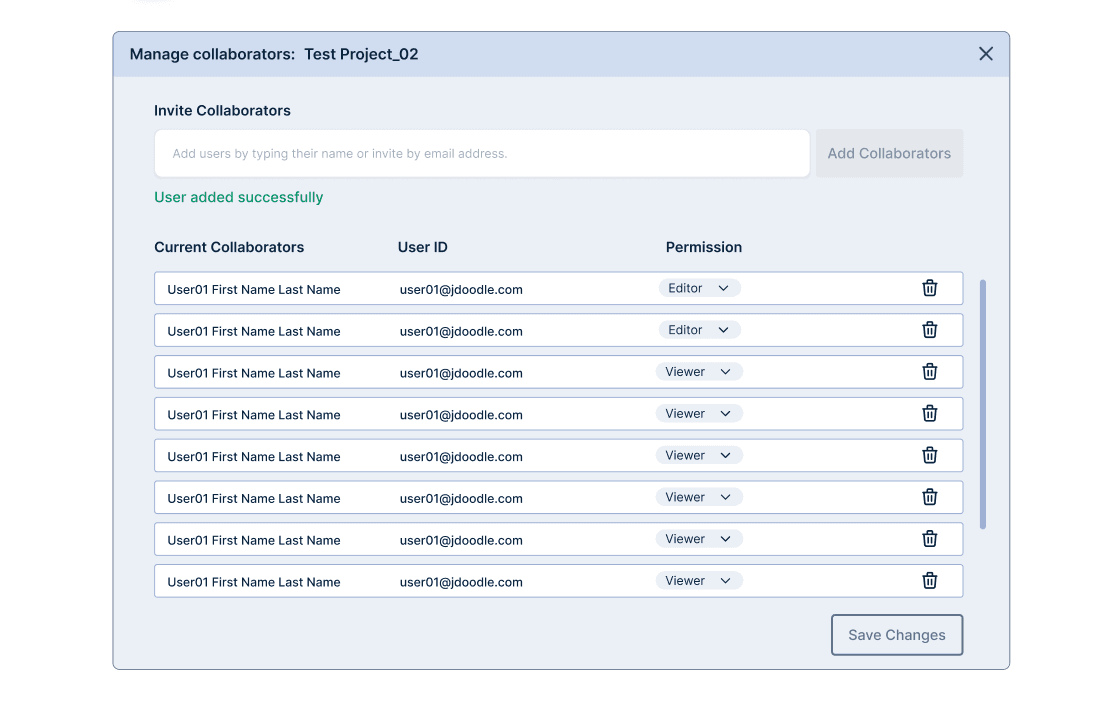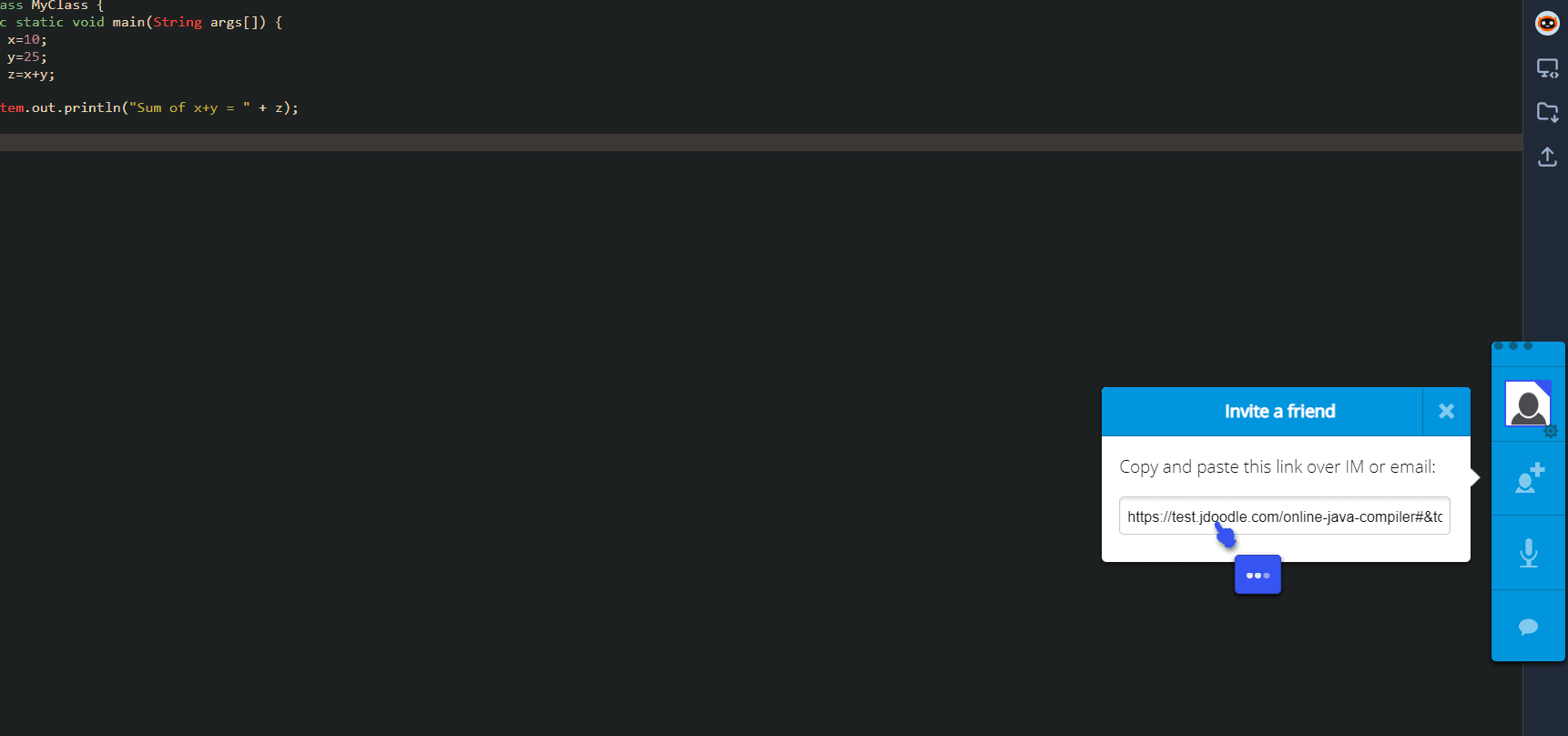In my previous job, I always coded like a lone wolf and bonded with colleagues over only a hot cup of chai. Our team lead used to check and approve the code, and we all had our own bubble. Then, one day, a guy from our team (one of my juniors) quit, and suddenly, I was responsible for his code.
Oh my, if it wasn’t the worst day of my life as a developer. I scratched my brain out trying to understand the code and then understood why devs don’t want to read the code of other devs.

That’s when I realized the importance of collaborative coding. Now, I prefer working in agile teams where we all code together and know and understand what we’re building.
If you’re smarter than me, you’ll read this blog to learn more about collaborative coding, how you can do it, and the best tools for it.
Let’s get started!
What does collaborative coding mean?
Collaborative coding is when two or more people collaborate to write code for different purposes, such as building software, code reviews, and hackathons.
In the past, collaborating on code required an office with several PCs where people huddled to work on the code. Now, developers can collaborate on platforms designed just for developers to code collaboratively. These platforms no longer need to be set up in one office but can be used remotely.
Before we show you how to code collaboratively using JDoodle, let’s understand the different types of collaborative coding.
What are the different types of collaborative coding?
Collaborative coding in agile teams is a multifaceted process, and there are three different types of collaboration:
Pair programming
Pair programming is when two programmers collaborate on the same project or at the same workstation. It is most commonly used in agile software development processes.
Typically, the duo consists of a navigator who assists with navigation and monitors the code and a driver who controls the keyboard and mouse. In the pair programming sessions, the navigator and the driver regularly swap roles.
Although some developers don’t like this hands-on approach, it’s seen as a valuable technique for enhancing developer communication, lowering code bugs, raising the general caliber of the codebase, and writing quality code.
Pair programming has been shown to increase code quality by 15%.
One of the most famous real-life examples of pair programming is its use in Extreme Programming (XP) teams at companies like Pivotal Labs and ThoughtWorks. These companies have successfully implemented pair programming as a core practice in their software development processes.
Developers work in pairs, with one writing the code (the driver) and the other reviewing each line as it is written (the navigator). This practice has been shown to improve code quality, enhance team collaboration, and foster continuous learning among team members.
Mob programming
Mob programming is similar to pair programming but involves more than two people. The group works on the same computer while seated around a wide table. Woody Zuill, an agile coach at Hunter Industries, popularized mob programming.
In its simplest version, just one person types (the driver), and the other team members (the navigators) provide recommendations and input. They rotate every fifteen to twenty minutes.
Although a mob programming session might sound somewhat chaotic, it’s a great approach to gathering a development team to produce better software. Well, provided the mob programming team follows a few basic guidelines:
- Follow the driver-navigator principle: Navigators communicate ideas clearly; drivers turn these ideas into code and ask clarifying questions without deviating from the navigator’s direction.
- Rotate drivers: Use a strict timer system to ensure everyone has a chance to navigate.
- Maintain respectful communication: Settle disagreements openly and honestly.
One of the most well-known real-life examples of mob programming is its implementation at Hunter Industries, an irrigation and outdoor lighting system manufacturer.
This approach has increased collaboration, code quality, and faster problem-solving. Hunter Industries’ success with mob programming has inspired many other companies to adopt this collaborative technique.
There are various ways in which mob programming is beneficial.
- By passing their knowledge and experience to one another, developers can learn from one another.
- The fact that several eyes are scanning the code constantly increases its quality.
- Because everyone offers ideas on how things should be done, there are fewer defects and better design choices.
But there are also setbacks. The largest one relates to how challenging it might be to arrange the space so everyone can see the screen and hear what’s being said.
Code sharing
The most straightforward collaborative coding method on our list is code sharing. This method entails sharing your code with one or more people who aren’t physically present at your place.
Indeed, code can be shared without face-to-face meetings between developers, and this is the best approach for most remote teams. In this technique, you share an editable or viewable link to your code or add your team members to collaborate on a project as viewers or editors.
How to get started with collaborative coding?
In this blog, I will guide you on how to start collaborative coding through JDoodle’s IDE. JDoodle offers collaborative coding in three ways:
- Editable and instant share links,
- Project collaboration, where you can add any user in your team as a viewer or an editor, and
- Live coding, where you can see edits and changes in real-time.
JDoodle’s project collaboration and live coding will go live in the third week of July, but I’ll give you a walkthrough for now, and you can try it out soon.
Instant share
Instant share lets you share a view-only link to your project without saving it or logging in.
[Interactive demo for instant share would be embedded here]
Instant share is perfect for quick feedback or collaboration on the fly. For instance, if you’re debugging a code snippet and need a colleague’s help. You can instantly share your code with them, and they can see and make the changes with you.
Here’s an instant share link for a simple JAVA program.
Editable share
With the editable share feature, users can share their saved code with others for collaborative editing.
Unlike instant share, you must log in to JDoodle and save your code before sharing. You can also end the editable sharing link anytime you want.
Here’s a link to editable code for a simple JAVA program.
For example, if you’ve completed a draft of your code and want team members to review and edit it, simply save your code and share the link. They will be able to make changes and improvements directly.
[Interactive demo for editable share would be embedded here]
Project collaboration
With project collaboration, you can work with your team on any project. To use this feature, you will need to:
- Log in and save your project on JDoodle
- Invite your team members to your JDoodle team
- Go to projects and invite collaborators.
You can invite collaborators to edit or view the project. You can also remove them anytime you want.

Live coding
The live coding feature lets you code with two or more people in real time. When the live coding feature is enabled, you can see all the changes happening in the code editor, watch your friend’s cursor, and code together.
The live coding feature is helpful for remote agile teams to work on large projects together either through pair programming or mob programming.

Here are other things to consider before you start collaborative coding:
Create a team balance
A well-balanced team is essential for effective collaboration. Make sure your team includes a mix of experienced developers, junior coders, and specialists in various areas like frontend, backend, and DevOps. This diversity ensures that different perspectives and skills are brought to the table, enriching the problem-solving process.
Additionally, team members’ personalities and working styles should be considered to promote a harmonious and productive working environment.
Assigning clear roles
Clearly defined roles help prevent confusion and overlap in responsibilities. Assign specific tasks and responsibilities to each team member based on their expertise and experience. For example, one developer might focus on frontend development while another handles backend logic.
Additionally, designate roles for project management, code review, and testing. This clarity ensures everyone knows what they are responsible for and helps streamline the workflow.
Establish clear communication
Effective communication is the backbone of collaborative coding. To keep everyone aligned, set up regular meetings, whether daily stand-ups, weekly check-ins, or ad hoc discussions. Use Slack, Microsoft Teams, or Discord for real-time messaging and updates.
Establish guidelines for documenting discussions, decisions, and progress to ensure everyone stays informed. Clear and open communication helps prevent misunderstandings and keeps the project moving forward smoothly.
What are the benefits of collaborative coding?
Collaboration can lead to a ton of efficiency in the workplace, but that’s not all; here are a few more benefits of collaboration when working on a project:
Faster debugging
Every developer can attest that debugging is one of the most time-consuming processes when writing code. But it’s not just us who say this; research says developers spend a third of their time debugging code.
But when collaboration comes into the picture, debugging becomes much faster because many people on your team are looking at the same code, and they can easily find any discrepancies.
Better communication
Good communication is the backbone of any successful project; collaborative coding makes this happen naturally. When developers work together, they constantly discuss their approaches, share their thoughts, and explain their challenges.
This interaction helps solve problems faster and ensures everyone is on the same page. It creates a unified team that understands the project goals, coding standards, and best practices, leading to smoother project execution.
Low risk
Collaborative coding also helps minimize risks associated with project development. When multiple people contribute, you’re not relying on just one person’s expertise. This shared responsibility means the project doesn’t stand a standstill if someone is unavailable.
Plus, practices like code reviews and pair programming catch potential issues early on, ensuring higher code quality and fewer last-minute surprises.
Faster training and onboarding
Bringing new team members up to speed can be daunting, but collaboration makes it much more manageable. When new developers work alongside experienced ones, they quickly gain a hands-on understanding of the project’s architecture and conventions, thus making a sturdy software development team.
This real-time learning approach and knowledge sharing drastically shorten the learning curve. Instead of spending weeks figuring things out independently, new hires can contribute meaningfully in a much shorter time, ensuring the team remains agile and productive.
What are some challenges that come with collaborative coding?
Collaborative coding may look like a bed of roses, with a few unique thorns. Here are a few challenges that are faced by most developers when they code collaboratively:
Communication challenges
While better communication can be beneficial, it can also be challenging. Coordinating between multiple team members requires regular meetings, updates, and discussions.
This communication overhead can sometimes slow down the development process, especially if team members are in different time zones or have varying schedules. Ensuring everyone is aligned and informed can take significant time and effort.
Conflicts
When multiple developers are working on the same codebase, merge conflicts are almost inevitable. Different coding styles, simultaneous changes, and overlapping tasks can lead to disputes that need to be resolved before the code can be integrated.
This process can be time-consuming and frustrating, requiring careful management to ensure that changes are merged smoothly without introducing bugs or errors.
Dependencies
Managing dependencies in a collaborative environment can be complex. When multiple developers add new features, update libraries, or change configurations, keeping track of all the dependencies and ensuring they are compatible can be challenging.
Mismanaged dependencies can lead to build failures, runtime errors, and other issues that can disrupt the development process and delay project timelines.
Code together with JDoodle
JDoodle is among the many popular collaborative coding IDEs with dynamic programming languages that let team members collaborate on a project. With its real-time collaboration feature, you can share your screen and work on the same project simultaneously with different team members. You can also share your screen and voice chat in real time as you collaborate.
JDoodle’s IDE is made by developers for developers, making it indispensable for various coding projects and helping you produce higher-quality code.
We also offer team accounts where organizations can create separate teams and use the JDoodle coding suite to make working on massive projects a cakewalk.
But that’s not the best part; you can try all these features for free! So, head to the IDE and try out our collaborative features now.
Frequently asked questions about collaborative coding
What is collaboration in coding?
Collaborative coding is when two or more people collaborate to write code for different purposes, such as building software, code reviews, and hackathons. This reduces the number of errors and speeds up project creation.
What is a collaborative code editor?
A collaborative code editor is software that allows multiple developers to simultaneously write, edit, and review code in real-time within the same environment. It often includes features like screen sharing, live chat, and version control to facilitate seamless teamwork and communication.
What is the best way to collaborate on a coding project?
The best way to collaborate on a coding project is to use a combination of version control systems for managing code changes and collaborative code editors that support real-time editing and communication.
Additionally, employing project management tools to assign tasks and track progress, along with regular meetings or check-ins, ensures the team stays aligned and efficient.

